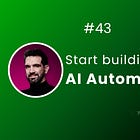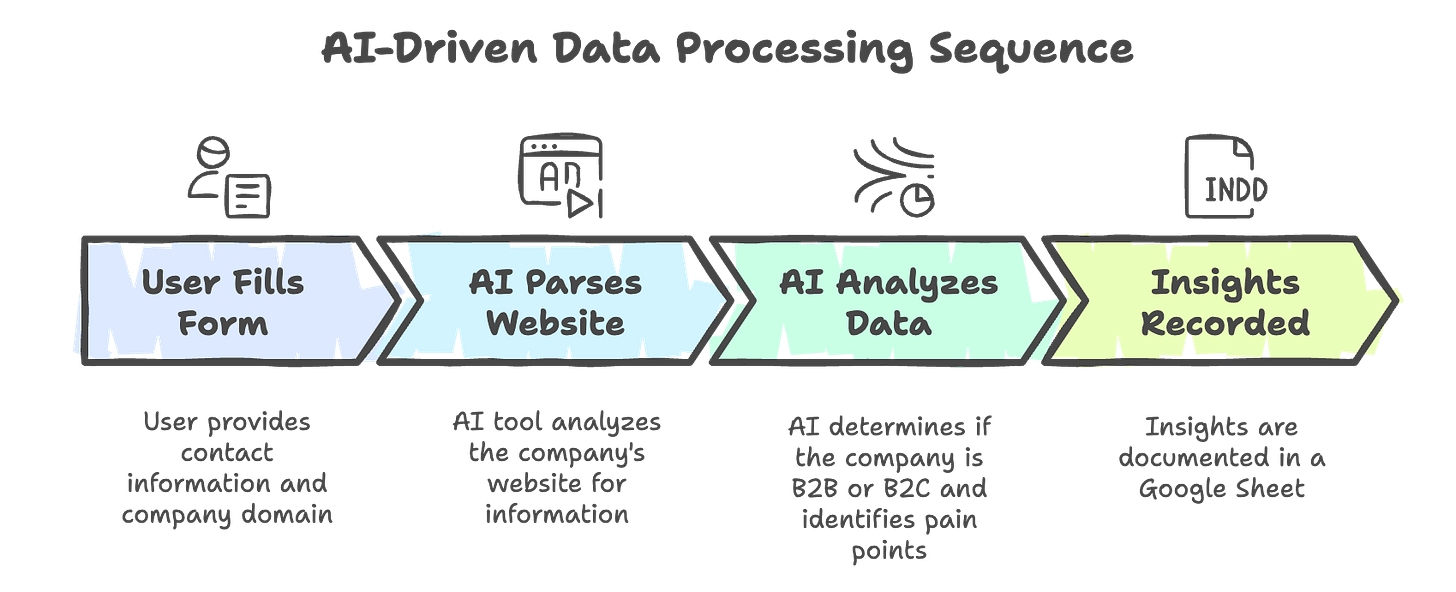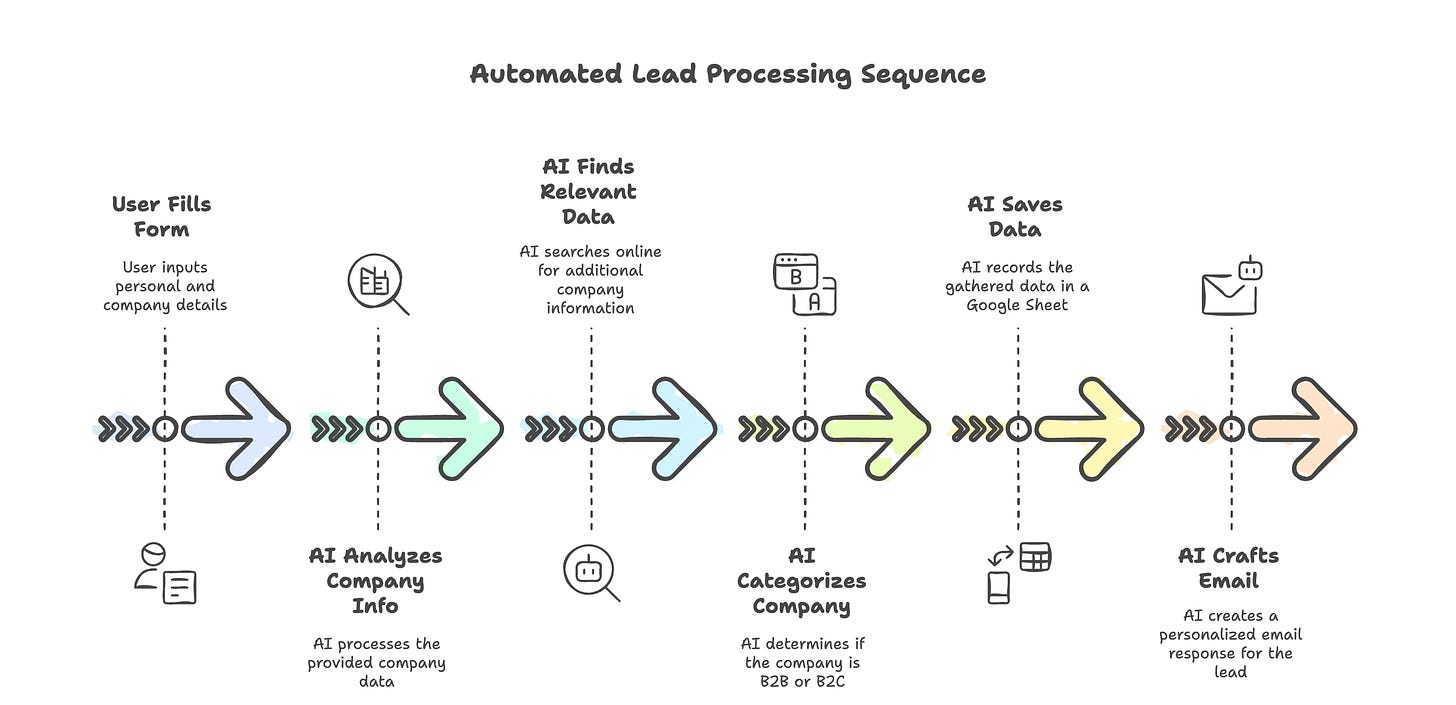Let's build your first "AI agent"
We continue our journey into the "Agentic world": let's build an AI Agent for lead gen.
Hello, thank you for reading The Product Courier.
We’re now 2,600 in the community, thanks. 🙏🏻
In this 46th edition, I want to share with you:
🗞️ Will AI Agents kill Product Managers?
Manus, the new sensation from China, shows a path for the future of work.
🧰 Build your first "AI agent".
We’ll detail how you can build a useful marketing agent with Relevance AI.
If you're new here, welcome!
I’m Toni, I help B2B companies build products people want to buy with AI-powered GTM and product tactics.
With Lucas, we share actionable AI tips to help you deliver better work and accelerate your career.
Happy reading!
News of the week. 📰
AI Agents killed Product Managers 📌
Product managers (PMs) and product marketing managers (PMMs) spend (too much) time on tasks that, while necessary, aren’t the real drivers of impact.
Research, documentation, competitive analysis, stakeholder updates—these eat up your day but don’t always move the needle.
With Autonomous AI agents becoming more capable, the challenge is not about using AI or not.
It’s about proving your value beyond the work that AI can handle.
The News
After Deepseek (read our take here), Manus is the new sensation from China.
They released an autonomous AI Agent that can handle entire workflows. The company shared demos with many use cases relevant to PMs and PMMs.
✅ It is not a simple reflex agent—it takes action. Manus automates entire workflows based on your objectives.
✅ It works across use cases. Whether it’s competitive research, GTM execution, or roadmap alignment, Manus adapts to the task at hand.
✅ It’s built for flexibility. No rigid templates—Manus adjusts to the context of your work.
Why it matters:
Think about your typical workday.
How much of it is spent on manual, repetitive tasks?
Autonomous agents like Manus run alone to analyze, prioritize, and execute most of those tasks.
If your time is spent on work that AI can do faster and better, where does that leave you? The role of PMs and PMMs is shifting from execution to higher decision-making.
What this means for Product teams
Value is not in how fast you can research or write reports or your ability to craft detailed User Stories and Marketing plans anymore.
As Claire Vo recently shared with
:“The things that product managers have held most dear as their skills and their contributions to teams are now collapsing in cost.
They're collapsing in time. And candidly, they're collapsing in value.”
The question is not if AI will take over Product tasks. It already is.
The real question is: How will we redefine Product roles?
Teams will inevitably become smaller and more efficient.
Technical understanding and business acumen will become prominent very soon.
It is time to shift the focus from traditional PM skills:
Master the art of interacting with LLMs
Learn the craft: prompt engineering, “vibe coding”, automation building…
Focus on “human” skills, like the ability to align stakeholders, negotiate, high-level thinking, all things that AI cannot handle.
Would love to hear your take: how do you see PM/PMM roles evolve in the next 12 months?
You want to master AI but are not sure of the Return on Investment?
Check out our free AI ROI Calculator:
Run a personalized estimate of the time your team can save using AI.
Get access to tailored AI training sessions to learn to work smarter. ✨
Your weekly tutorial. 🧰
Let’s build your first AI agent 🤖
“You’re either the one that creates the automation or you’re getting automated.”
Tom Preston-Werner.
✅ AI Agents range from simple workflows to fully autonomous agents.
✅ AI Agents combine LLM, RAG, memory, and tools to act autonomously.
✅ We’ll build a marketing agent with Relevance AI.
Previously on The Product Courier show…
Let’s continue our journey into the Agentic world:
We started with Zapier AI Automation.
Then, I introduced AI automation with Make.com.
On the spectrum of “Agentic Systems,” these examples are on the lower end, often described as “reflex” agents:
pre-structured automated workflows triggered by specific signals.
The most common AI applications today are reactive. Large language models (LLMs) can generate responses based on prompts but cannot:
Execute actions without human intervention.
Interact with their environment, and learn from past experiences.
Plan and optimize their approach dynamically to achieve a goal.
These elements are key to understanding how AI agents work and the multiple combinations we find in what everyone just calls “AI Agents”
The automated workflows we built interacted with various tools, but they are reactive with very limited autonomy and not goal-based with their structured action flows.
Now, let’s move up the agentic ladder.
Understand the fundamentals of AI Agents
Today, we are taking it up a notch with goal-oriented and more autonomous agents.
First, let’s explain what constitutes the “core” of Agentic systems:
At the heart of agentic workflows, there is usually an “augmented LLM” module with this structure (as presented by Anthropic):
Model
The AI model that powers the agent.
Typically based on LLMs (GPT-4, Claude, Gemini) or custom-trained models.
Retrieval
Agents need access to relevant information beyond their knowledge
Retrieval-Augmented Generation (RAG) helps AI fetch real-time data (specific company information, stock prices, latest news…)
Memory
Agents store short-term and long-term knowledge. This helps maintain context across interactions (AI customer support remembering a user’s previous queries to adapt their responses)
Tools
Agents can interact with external tools and software to complete tasks.
This includes API calls, database queries, and workflow automation.
Time to build.
Now that we understand the basis of AI agents, let’s build one!
For this, we’ll use the same starting point as our first AI automation with Zapier:
You work for a Lead Gen AI tool. You have a new feature coming out soon.
You built a form to invite potential users to join a waitlist.
Problem:
You want to focus on B2B companies and understand their pain points related to lead gen before giving them access to the feature.
But you want to keep a list of B2C companies’ info because there is a secondary use case of the feature for brand recognition you might need to test later.
Except, this time, we can go further, with little extra effort.
User fills out a form
On the form, we’ll just ask people to input their names + company name & email.
Our AI Agent will autonomously :
Analyze the company information,
Find relevant data online about the company
Categorize B2B or B2C
Save the data in a Google sheet
Craft a personalized email to reply to the lead
And, once more, all this at cost 0$.
Insane, right? Here we go.
Step 1 - Sign up to Relevance AI
Go to https://relevanceai.com/
Create an account.
Free tier offers 100 credits/day
You can start with several templates, but most relevant agents need an upgrade.
A new feature called “invent” lets you describe the agent you want to build, and Relevance will build the structure for you.
For learning purposes, we’ll build one from scratch today.
Step 2 - Setup the Agent - Triggers
Let’s configure the Agent.
Keep reading with a 7-day free trial
Subscribe to The Product Courier to keep reading this post and get 7 days of free access to the full post archives.












